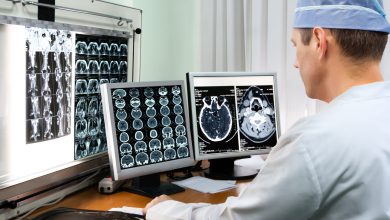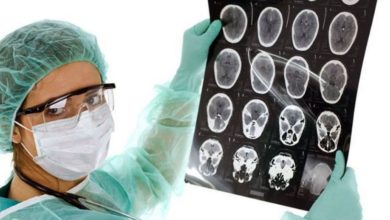Malignant brain tumor (types)
Moreover, in subsequent cases it often cannot be treated. Such tumors are classified according to several criteria:
• secondary or primary;
• malignant and benign ;
Primary tumors are those that develop from one tissue, do not spread to other organs, and grow very slowly.
Secondary - also called metastatic, they develop against the background of tumors already existing in the body in other organs.
Benign tumors are tumors whose cells are similar to the cells of the surrounding tissues and do not metastasize to other organs. Such tumors are amenable to surgical treatment. However, benign tumors can develop into malignant tumors or cancer cells. These cancer cells grow quickly and can spread to other organs. It is malignant tumors that are considered the most dangerous among a number of diseases and, in the last stages of their development, very rarely treatable.
Stages of development of cancer tumors.
Almost every malignant neoplasm has only two stages of development.
The first stage is the appearance of a neoplasm, cell mutation. It has virtually no effect on life activity. Quite difficult to detect and treat.
The second stage is the progression of cell growth, further mutation, as well as the penetration of these cells into other organs. It is during this period that symptoms may begin to appear, such as vomiting, nausea, and sometimes even hallucinations and visual disturbances.
Types of malignant tumors.
There are quite a large number of malignant neoplasms in the brain, some of which may also be benign.
Here are some of the most common ones:
1. glioblastoma;
2. medulloblastoma;
3. germ cell tumors;
4. ependymal;
5. oligodendroglial;
6. astrocytic
7. gliomas;
8. anaplastic astrocytoma;
9. diffuse;
10. piloid;
Symptoms of such a tumor:
• irritability;
• fatigue;
• lethargy.
Medulloblastoma also develops quite quickly. Its cells appear in the embryonic stage of development in the embryo.
Germ cell tumors are tumors that develop from germ cells and form a secondary focus in the brain. They may also be benign.
Symptoms of such a tumor:
• lower abdominal pain;
• sharp pain in the side;
• increased body temperature;
Epindial cancer cells affect the cerebral ventricles, depending on the form of such a tumor, they have different growth rates.
Oligodendroglial cells have grades 2 and 3 of development. The second degree means very slow growth and easy recognition of such cells, 3 - on the contrary, it is quite difficult to detect, moreover, such cells grow quickly. At risk are people aged 37 to 60 years.
Ependymal cells grow quickly and are amenable to surgical treatment if promptly referred to the clinic.
Astrocyte tumors are considered a dangerous type of tumors that are not benign and arise in the brain. They can grow both slowly and quickly, accompanied by:
• nausea;
• headaches;
• fatigue;
• depression;
• sleep problems;
Please rate the article:






Thank you